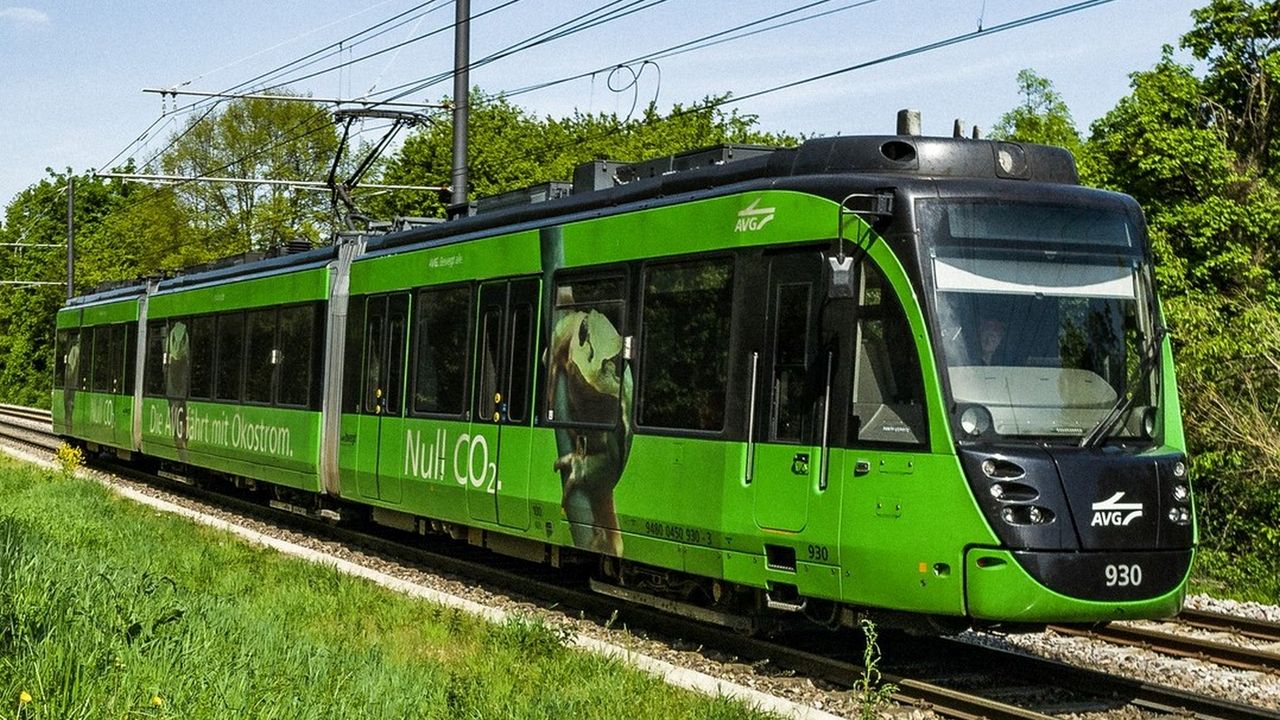
The best solution to improve the carbon footprint of freight transport is to shift more of it onto rail. At the moment, however, this “combined transport” by rail moves chiefly between major freight terminals or to and from seaports. In cities and the surrounding countryside, rail freight traffic has so far tended to rank second or third.
To find better solutions for the future, the three-year LogIKTram project was launched on March 1, 2021. As an essential subproject of the overall regioKArgo initiative, researchers want to explore and implement new forms of cross-modal freight and delivery traffic.
As part of regioKArgo, more traffic is to be shifted from road to rail and, in addition, the last mile of delivery is to be made emission-free. “The existing infrastructure of the ‘Karlsruhe Model’ offers optimal conditions for developing new forms of freight transport and testing them in practice,” says Ascan Egerer, technical managing director of Albtal-Verkehrs-Gesellschaft (AVG). This “Karlsruhe model” has already combined streetcar lines in the city and rail lines in the surrounding area for almost 30 years.
As part of LogIKTram, the researchers now want to go one step further and develop a logistics concept and an information and communications technology (ICT) platform for future freight transport in streetcar and light rail vehicles. The existing streetcar and rail infrastructure will be used for this purpose, explains Dr. Michael Frey, deputy institute director at the Institute of Vehicle Systems Technology (FAST), KIT Vehicle Technology Department.
Goal: Live operation also in the region
LogIKTram has set itself several goals. For one thing, a technical concept for a “freight streetcar” based on a dual-system light rail network according to the “Karlsruhe Model” is being developed, for which the AVG will provide an older vehicle. This will be specially adapted for the requirements of transporting goods and tested as an initial demonstration object.
“A further sub-project called regioKArgoTramTrain will expand on this to enable the new train to be used not only on a test basis at the depot but also for live operation in the region,” says Egerer. “To this end, we have applied for funding in the RegioWIN state competition.” Before real operation, “further tasks have to be worked on in the areas of traffic concept, rail operation, design of handling processes and legal principles.”
For the streetcar to be able to transport not only goods but also people, the interior must be designed flexibly. Plus, the transport containers are to be loaded, unloaded and secured automatically using devices such as hooks and latches. Fey emphasizes that precise positioning of the trains at the stations is crucial so that the transport containers can be moved with centimeter precision and to comply with the normal passenger changeover times in passenger transport. This is because “the existing schedules should be maintained.”
Simulation of passenger and freight transport in the region
Scientists from KIT’s IfV are investigating the effects of the concept on road and rail traffic. To this end, they are building a simulation environment for passenger and freight transport in the Karlsruhe model region based on the mobiTopp traffic demand model developed at IfV. On this basis, they will then investigate various operating scenarios for the LogIKTram and their traffic effects.
“The aim of the project is to make sensible use of rail transport capacity in a time-dependent manner. In doing so, it is important to take into account the requirements of both passenger and freight traffic and combine the two,” explains Dr. Martin Kagerbauer, member of the management team at IfV. “With this project’s combined passenger and freight transport model, it will be possible for the first time to evaluate scenarios that optimize the utilization of rail vehicles with both passenger and freight transport. It will enable us to develop sustainable, environmentally friendly concepts that reduce the burden on road traffic.”
Funding from the federal government
Participants in the project are Albtal-Verkehrs-Gesellschaft (AVG) as the lead company, the Karlsruhe Institute of Technology (KIT), Offenburg University of Applied Sciences, the FZI Research Center for Information Technology, and the companies MARLO Consultants, SimPlan, INIT and Thales Deutschland. DB Engineering & Consulting is represented by experts from Karlsruhe and Berlin on the subject of logistics and operator concepts as well as on the concept of the freight streetcar system with its rail technology and logistics expertise. Various logistics companies as well as e-mobil BW and the State Agency for New Mobility Solutions, and Automotive Baden-Württemberg are involved as associated partners. The project is funded by the Federal Ministry for Economic Affairs and Energy (BMWi) with a total of about €2.75 million.
Also of interest:
Truck2030: Driving autonomously, doing fitness in the cabin
First automated truck convoy on public roads

